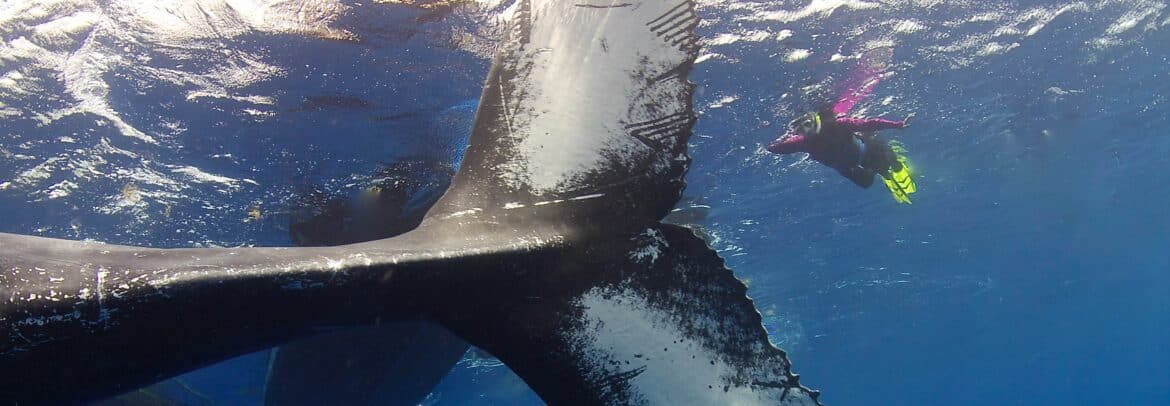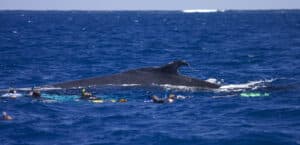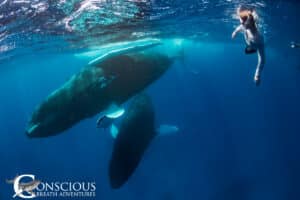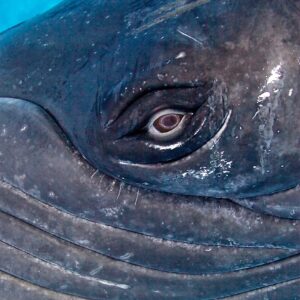- Welcome to Conscious Breath Adventures
Why Swim With Whales?
- Home
- Humpback Whales
- Why Swim With Whales?

Why is whale watching so popular and why would anyone want to swim with whales?
Every year more than fifteen million people go whale watching in more than a hundred countries around the world, with more watchers participating every year. But what attracts them to the whales, creatures so very different than we are?

People who go to watch whales (or gorillas, polar bears, or even monarch butterflies, or who engage in any wildlife ecotourism) are seekers at heart. What they seek is a connection to something outside of their usual day-to-day human existence, outside of their usual environment and outside of their self. Though the creatures they observe can be any size, great or small, what they seek is always something much larger than they are, something that has been disappearing from our contemporary urban and suburban cultures for many generations.
What is Lost?
What is being lost is the foundational, living connection to nature and the environment and the greater energy that powers it all. Some people call it Mother Nature, Mother Earth, Gaia or by many other names. But whenever someone goes to watch whales they are seeking a connection to that universal life energy, in this case personified by an amazing – and very large – animal: a whale.

These days the modern human consciousness is beset by so many daily distractions. There is bad news and worries at every turn, ecological threats too numerous to count, divisive politics, intrusive advertising and the other pervasive and omnipresent foreground and background noise that separates the human soul from the energy that enriches it. People can spend a day or a week – or even much longer – without feeling actual earth beneath their bare feet. The disconnection is real even though most people don’t consciously realize that anything of value is missing. Life goes on and everything seems fine!
How Do You Find It?
For many people there is a nagging need, it can be conscious or unrealized, to metaphorically try to reach out and put their hand on the chest of Mother Nature. To see her, hear her, smell her, feel her and gain comfort and strength from the connection. And some of those people will go to watch whales to look for her.
But whales are marine mammals who live their entire lives in the sea, submerged out of sight except for the brief intervals they rise to breathe – the same air we breathe – or to perhaps engage in another fleeting surface behavior. On most whale watching excursions, success is often defined by merely witnessing a whale breathing in the distance, or maybe feeding or socializing. A distant blow, the flip of a fluke and the trip has been a success!
This is all well and good but the watcher often yearns for more. Sometimes the whale watcher is lucky and the whale may respond to the boat, approach and interact, sometimes very closely. The whale is making a connection between species across boundaries, and the seeker is very well-rewarded. Watching another living creature breathe or feed is an intimate moment. And as humans we breathe and eat, too, that is one connection we share with the whales. What more could they hope for?
The answer to that question is also the reason why some intrepid seekers want to swim with whales, too.
“What Experience Do You Want?”

When guests of Conscious Breath Adventures travel with us to see and swim with the humpback whales on the Silver Bank, I often ask them at the beginning of their cruise “what brings you here, what is the experience with the whales that you are looking for?” Almost every time the answer is “I want to look a whale in the eye.” And that is because between two different species eye-to-eye contact is the closest and most intimate experience that can be shared, a glimpse into the window to the soul. It is in that moment that the deepest connection our seeker seeks has finally been found!
What do they find? A mysterious bridge across an unfathomable gap, a powerful connection, a mystery in which the whale is an active participant. The whales approach out of their own free will, by their choice, because they want to. But why? What is the reward for the whale (does a whale even feel the need to be rewarded)? What possible interest can this intelligent forty-foot, forty-ton animal have in a few little terrestrial mammals floating around on the surface of the sea?
When a whale looks you in the eye, the emotions can be overwhelming: first-timers often laugh or cry with joy. But what is the whale thinking? What is going through its mind? There is simply no way of knowing which makes the entire experience so powerful and humbling that many swimmers describing the feeling in almost spiritual terms.

That is why people go to swim with whales, to achieve that same powerful connection that some can find through spirituality or religion, or meditation, or other philosophical practices; to feel and be part of the larger energy that flows through all living creatures, great and small. There are other ways to achieve it, very few have the transformational impact and immediacy of a face-to-face interaction with a wild and free humpback whale.
And in the end, that is Conscious Breath Adventures’ privileged task: helping bring the seeking swimmer and curious whale together to share an incomparable experience…